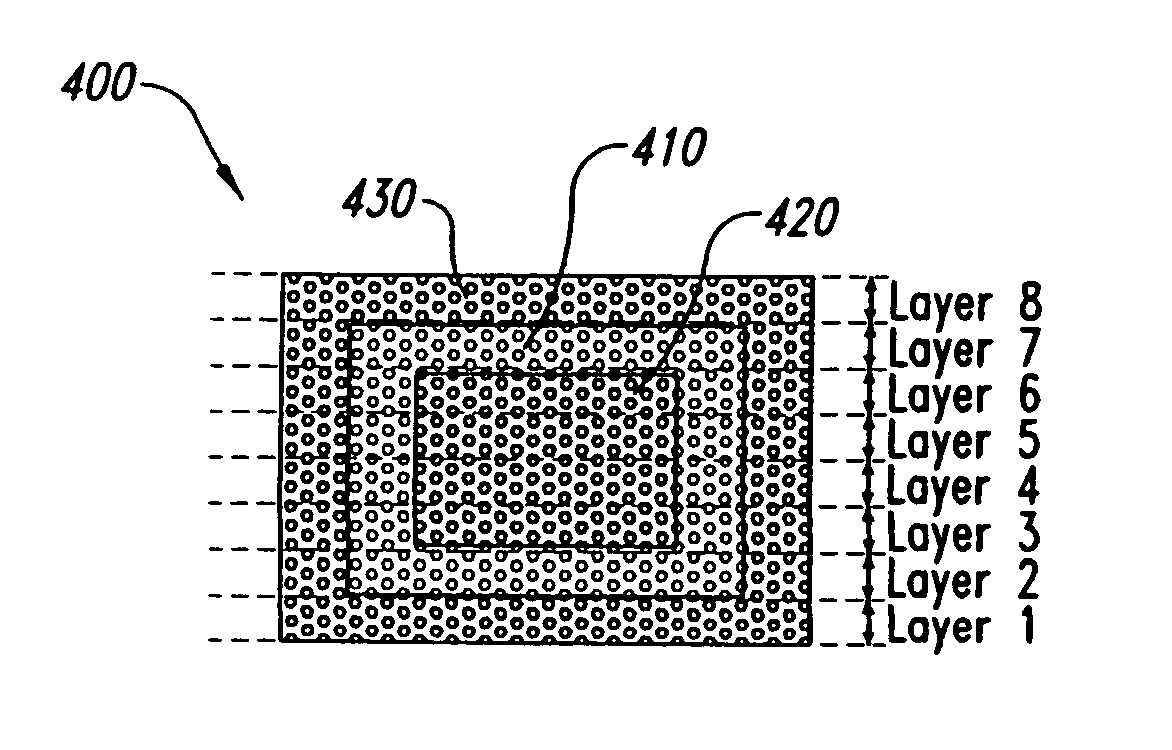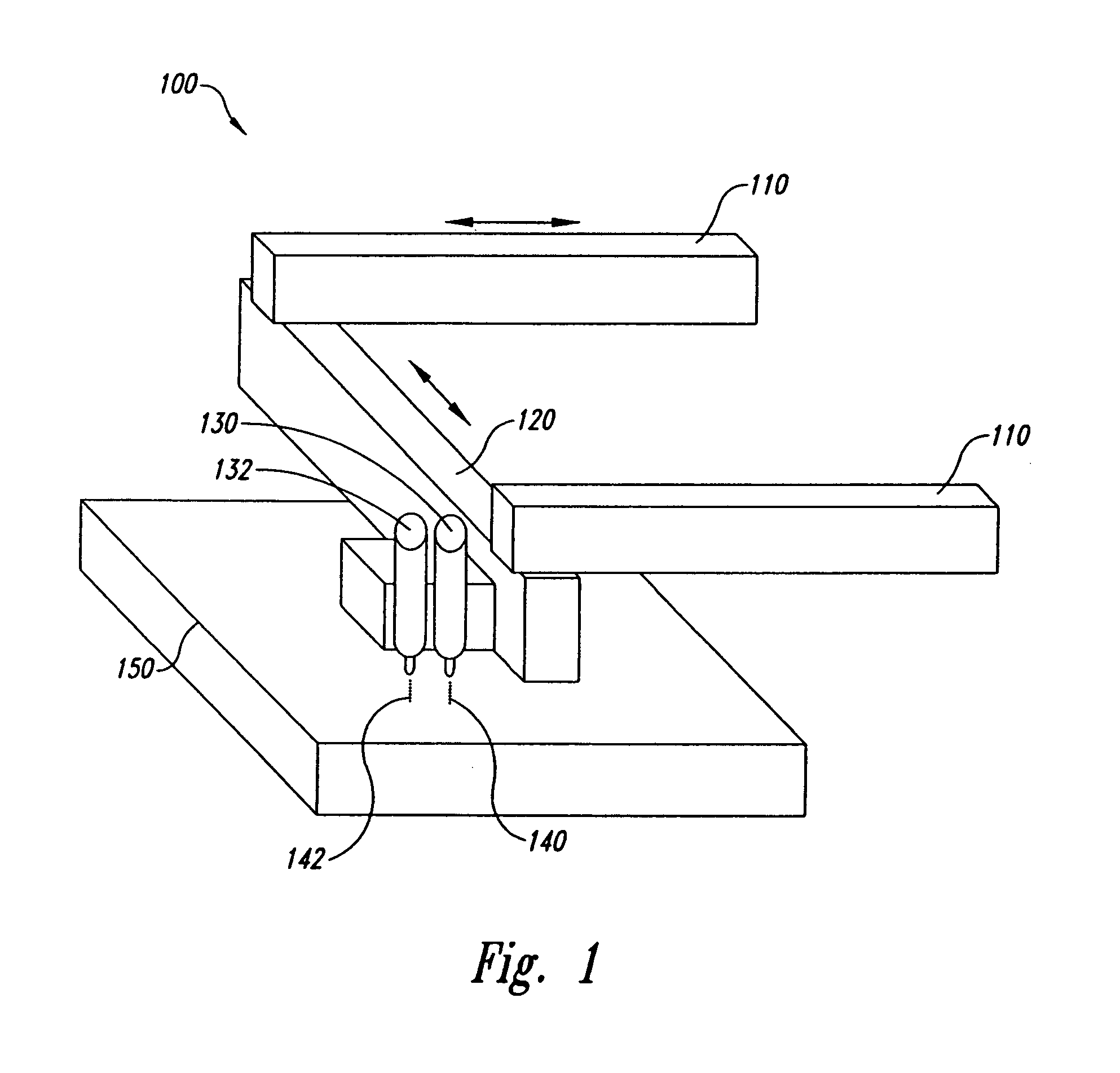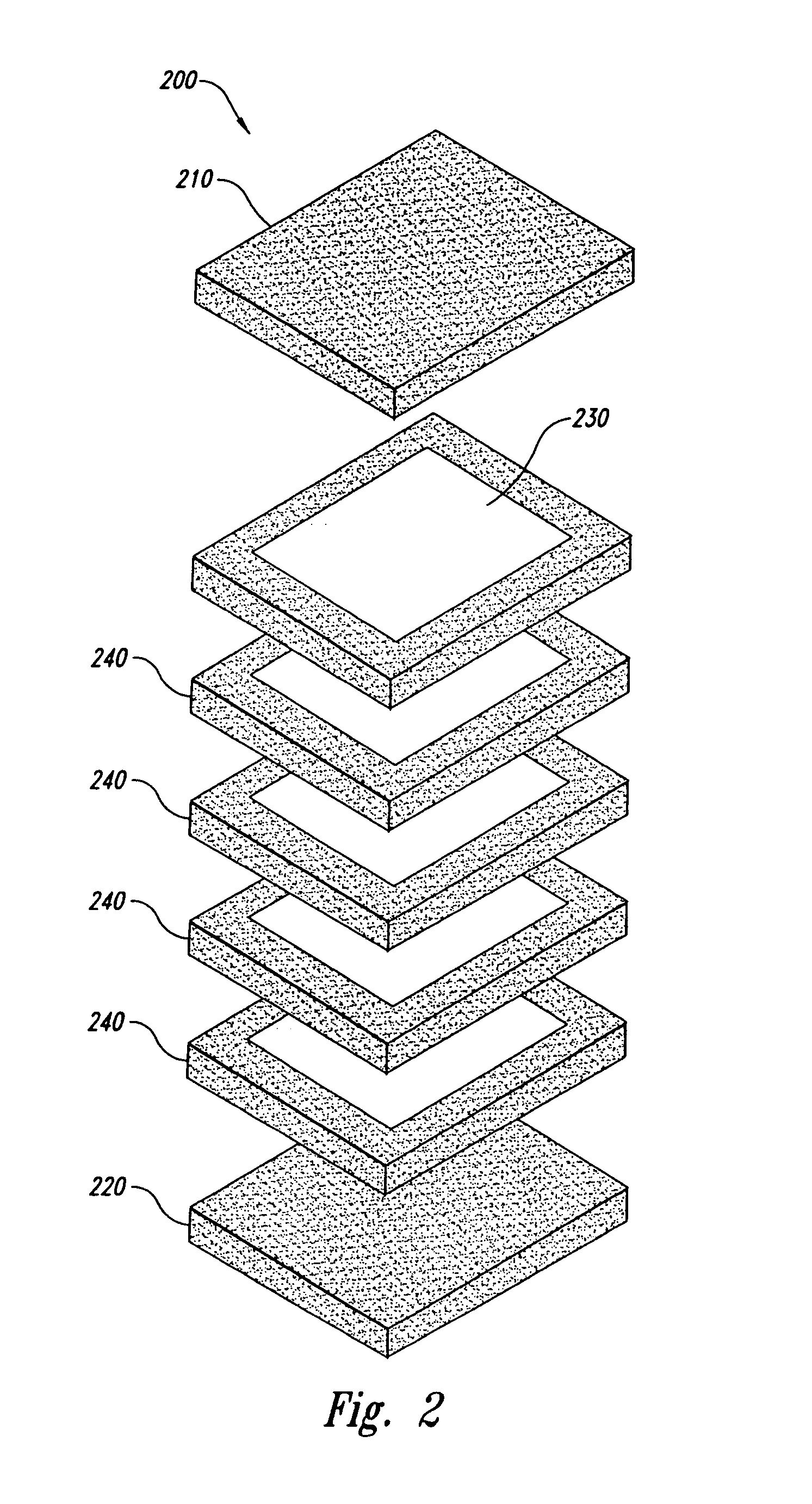Method and form of a drug delivery device, such as encapsulating a toxic core within a non-toxic region in an oral dosage form
a drug delivery and toxic core technology, applied in the field of oral dosage forms, can solve the problems of manufacturing personnel and non-patient personnel, the coating process itself does not circumvent the powder-mixing step, and the toxic or hazardous substance is not isolating personnel, etc., to enhance the absorption of the drug, improve the absorption rate, and reduce the effect of drug absorption
- Summary
- Abstract
- Description
- Claims
- Application Information
AI Technical Summary
Benefits of technology
Problems solved by technology
Method used
Image
Examples
example 1
[0053]Drugs of particular interest are camptothecin (C20H15N3O6) and its derivative, 9-nitrocamptothecin (9-NC) (rubitecan), and also other derivatives of camptothecin. These drugs are effective against pancreatic cancer, which is a particularly virulent form of cancer. 9-NC has an oral LD-50 (for mice) of 55 mg / kg acute, 2.5 mg / kg chronic. It is considered extremely dangerous to handle. In fact, its toxicity is part of what makes it useful against cancer. Despite the drugs' known effectiveness, drug manufacturers and packagers are reluctant to manufacture solid ODFs using the drug because of its toxicity and potential hazard to manufacturing personnel. If a conventional uncoated tablet of this pharmaceutical were made by tablet-pressing methods, airborne particulates would be a significant hazard to manufacturing and packaging personnel, and direct contact with the tablets would be a hazard to nurses, pharmacists, and other healthcare personnel. Because of this, the drug is relativ...
example 2
[0060]Other drugs of interest are thyroid hormones, triiodothyronine (T3) (molecular weight=650.98 g / mole) and tetraiodothyroxine (T4) (molecular weight=776.87 g / mole). These are hormones which are even more potent per unit mass than the previously described anti-cancer drug. Similar to anti-cancer drugs, hormones have the concern of unwanted personnel exposure to the actives during processing and hence require isolation from personnel who manufacture and handle the product. This example illustrates a different category of drug, namely hormones. For certain therapeutic purposes, these two hormones would need to be included in a single oral dosage form. Thus, this example also illustrates an extra detail of manufacturing beyond Example 1, namely the creation of two geometric drug regions instead of just one. In this example the dispensed liquid is a solution rather than a suspension. The desired drug loading in a tablet is a dosage of T4 per tablet in the range of 25 to 200 microgram...
PUM
| Property | Measurement | Unit |
|---|---|---|
| size | aaaaa | aaaaa |
| particle size | aaaaa | aaaaa |
| diameter | aaaaa | aaaaa |
Abstract
Description
Claims
Application Information
 Login to View More
Login to View More - R&D
- Intellectual Property
- Life Sciences
- Materials
- Tech Scout
- Unparalleled Data Quality
- Higher Quality Content
- 60% Fewer Hallucinations
Browse by: Latest US Patents, China's latest patents, Technical Efficacy Thesaurus, Application Domain, Technology Topic, Popular Technical Reports.
© 2025 PatSnap. All rights reserved.Legal|Privacy policy|Modern Slavery Act Transparency Statement|Sitemap|About US| Contact US: help@patsnap.com



